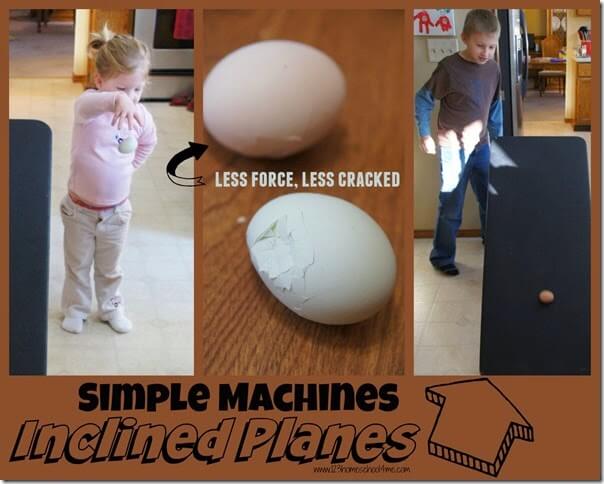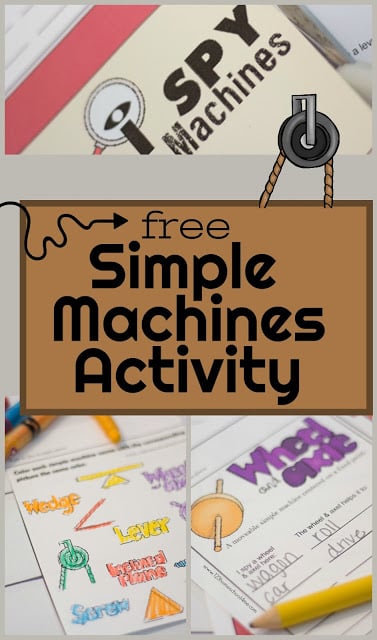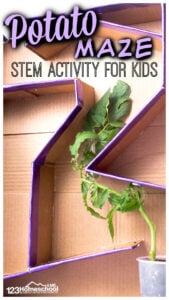Join us in our five weekscienceunit for kids discovering the sixsimple machines.
Lots of hand on activities, book recommendations, free printables, and more!
Keep scrolling to learn more and see the rest of oursimple machines for kidsstudy!

We need simple machines to help us work more effectively.
To better understand how machines work, we need to define somephysics concepts for kids.
These are our favorites that I highly recommend.

If you have a Preschool or Kindergarten age child joining yourSimple Machine Unitthey will enjoyNewton and Me.
This beautifully illustrated picture book explains the basics of forces and motion in an easy to read rhyming book.
Lets start with asimple hands on science activity to help kids understand the basics of physics.
Put a box of books that is too heavy for your child to lift on the floor.
Ask your child to life the box on the table.
They can take the books out/move the box/put the books back in or have a friend help them.

Machines make our work easier.
Luckily we have a machine called a tow truck that makes it easier.
What are other types of machines we use?
Simple machines have one or no moving parts.
Inclined Planes
An inclined plane is a flat surface with one edge raised higher than the other.
They are useful to help moving heavy items from one level to another easier.

They include things like hills, ramps, staircases, and so many more!
First I had the kids attempt to carry a suitcase up and down the stairs.
(Yep, I made it extra heavy.)
Then I suggested we try moving it using an inclined plane like we were learning about.
We used a long card table since we didnt have a box laying around.
Inclined Planes Eggsperiment
Next we explore how inclined planes reduce force with an eggsperiment.

I hardboiled three eggs (I didnt really relish the idea of having egg all over).
One kid dropped the egg straight down.
The next used an inclined plane.
The third child used a very gradually sloped inclined plane.
Force Varies by Incline
We did athird simple machine inclined plane experiment.
So we had 3 ramps of increased steepness.

We then raced them to see which one would go down with the most force; quickest.
Its the length of your incline plane (ramp) divided by your height.
Youve GOT to try some of theseoutrageously funscience experiments for kids!























